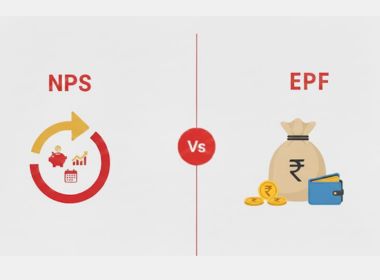Search Suggestions
- Gold Loan
- Money Transfer
- Mutual Funds

What is CAGR in Mutual Funds? Understanding Compound Annual Growth Rate
Investing in mutual funds can be one of the most rewarding financial strategies for building wealth over time. However, understanding how to evaluate the performance of your mutual fund investments is crucial for making informed decisions. This is where the concept of CAGR, or Compound Annual Growth Rate, becomes invaluable. But what is CAGR in mutual fund investments, and why is it important?
Table of Content
- What is CAGR in Mutual Funds?
- Importance of CAGR in Mutual Fund Investments
- How to Calculate CAGR?
- How to Use CAGR for Mutual Funds Investment?
- Limitations of CAGR
- Conclusion
CAGR is a widely used financial metric that measures the average annual growth rate of an investment over a specified period. Unlike absolute returns, CAGR considers the compounding effect, giving a more accurate representation of an investment's performance. Whether you’re a seasoned investor or just starting, understanding the meaning of CAGR in mutual fund investments can help you compare different funds and track your portfolio's progress efficiently.
In this blog, we will explore the full form and meaning of CAGR in mutual fund calculations, its significance, and the calculation process. By the end, you’ll know how to use CAGR as a reliable tool for evaluating your investment returns and planning future financial goals.
What is CAGR in Mutual Funds?
CAGR, or Compound Annual Growth Rate, is a financial term that shows the average annual rate of return on an investment over a specific period, assuming the profits are reinvested. Unlike other return measures, such as simple annual growth or absolute return, CAGR considers the compounding effect, making it a more accurate metric for evaluating mutual fund performance.
The CAGR full form in mutual fund investments highlights the importance of compounding, where the returns earned are reinvested to generate additional returns. This metric helps investors understand how their investments grow consistently over time, smoothing out market volatility.
Suggested Read: 7 Common Myths About Mutual Funds
Importance of CAGR in Mutual Fund Investments
CAGR is a critical tool for mutual funds investment analysis for several reasons: =
Accurate Growth Representation
CAGR eliminates the impact of market fluctuations by focusing on the overall growth trend over a specified period.
Comparison Across Investments
It allows investors to compare the performance of different mutual funds or other investment options, irrespective of the investment amount or time frame.
Goal Tracking
CAGR helps in evaluating whether your investment is on track to meet your financial goals, such as retirement planning or buying a house.
Risk Analysis
Investors can use CAGR to assess the risk and reward balance of their mutual funds. High CAGR over a longer period generally indicates consistent performance.
How to Calculate CAGR?
The formula for calculating CAGR is
CAGR = [(Final Value / Initial Investment) ^ (1/n)] - 1
Here’s a step-by-step guide to calculate CAGR:
Identify the Beginning and Ending Value
The beginning value is your initial investment amount, while the ending value is the investment's value at the end of the specified period.
Determine the Time Period
Count the number of years over which the investment has grown.
Apply the Formula
Plug the values into the formula to calculate the CAGR.
How to Use CAGR for Mutual Funds Investment?
Compare Fund Performance
Use CAGR to evaluate and compare the returns of different mutual funds. This helps in selecting the best-performing funds for your portfolio.
Set Realistic Expectations
CAGR provides a realistic picture of potential returns, enabling investors to set achievable financial goals.
Assess Fund Managers
Consistent CAGR over several years may indicate effective fund management.
Limitations of CAGR
While CAGR is a valuable tool, it has its limitations:
- Ignore Volatility: CAGR assumes steady growth and doesn’t reflect market ups and downs.
- Not Suitable for Short-Term Investments: For short durations, CAGR may not provide a clear picture of investment performance.
- Dependent on Time Frame: The chosen period can significantly influence the CAGR, making it less effective for irregular investments.
Conclusion
CAGR in mutual fund investments is a powerful metric for understanding and comparing investment growth. By learning CAGR meaning in mutual fund performance evaluation, investors can make informed decisions and align their portfolios with financial goals.
Whether you are planning your first mutual funds investment or optimising your current portfolio, understanding CAGR empowers you to navigate the complexities of the market with confidence. While it is not without limitations, when used alongside other tools, CAGR provides a clearer picture of long-term growth potential, helping you maximize your returns.
- Invest in Mutual Fund
- Systematic Investment Plan
- Mutual Fund Calculator
- Liquid Mutual Fund
- Debt Funds
- Balanced Funds
- Equity Linked Schemes
- Tax Saving Schemes
CATEGORIES
OUR SERVICES
-

Gold Loan
-

Personal Loan
-

Cibil Score
-

Vehicle Loan
-

Small Business Loan
-

Money Transfer
-

Insurance
-

Mutual Funds
-

SME Loan
-

Corporate Loan
-

NCD
-

PAN Card
-

NPS
-

Custom Offers
-

Digital & Cashless
-

Milligram Rewards
-

Bank Mapping
-

Housing Finance
-

#Big Business Loan
-

#Gold Loan Mela
-

#Kholiye Khushiyon Ki Tijori
-

#Gold Loan At Home
-

#Sunherisoch
RECENT POSTS

Gilt Fund vs Liquid Fund: Full Form, Meaning & SIP Guide
Know More
XIRR in Mutual Funds & SIP: Full Form, Meaning, Formula and How to Calculate
Know More
7 Key Factors to Consider Before Taking an SME Loan
Know More
Difference Between Black Gold and Gold: Everything You Need to Know
Know More
NPS vs EPF: Everything You Need to Know About Retirement Savings
Know More
What is a Credit History? Impact on Credit Score and Credit Report
Know More
Loan Closure Vs. Loan Settlement: Meaning, Benefits, and CIBIL Score Impact
Know More
Is Silver the New Gold? A Look at 2025 Price Trends
Know More
What Are the Various Types of Equity Funds and How They Work?
Know More
Why Are Gold Loans Becoming the Most Preferred Financial Option in 2025?
Know MoreFIN SHORTS

What Are Co-Pay and Deductibles in Insurance Policies?
Know More
Should You Take a Loan Against Your Mutual Fund or SIP?
Know More
Top 5 Best Mid-Cap Mutual Funds to Watch in 2026
Know More
Are Personal Loans Right for Retirees? Key Points to Consider
Know More
What Happens to a Personal Loan After the Borrower Dies?
Know More
Best Loan Choices for Credit Scores of 580 and Below
Know More
7 Reasons Why a Gold Loan Is the Best Option for Small Businesses
Know More
10 Reasons Why People in India Prefer Physical Gold
Know More
Real Estate vs Gold: Which Is a Better Investment in India?
Know More
10 Common Mistakes That Make Investors Lose Money in Mutual Funds
Know More
10 Reasons Why Gold Has So Much Appeal in Uncertain Times
Know More
7 Ways Settling Debt Can Impact Your CIBIL Score
Know More- South +91 99469 01212
- North 1800 313 1212


